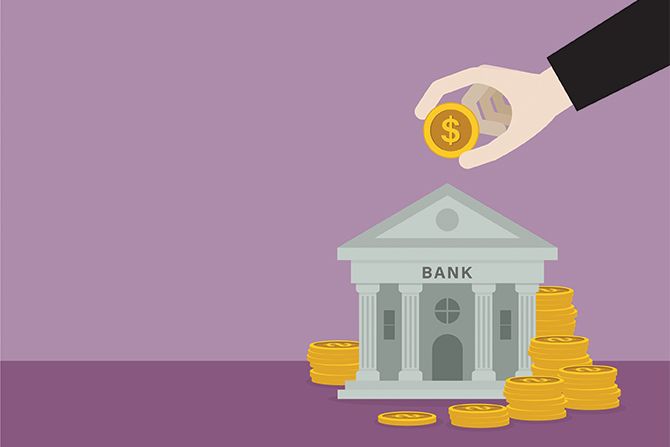With banks still flooded with cash in the wake of the pandemic, many are waiting to raise deposit rates, content to watch some excess liquidity run off the balance sheet. But in a rising rate environment, some analysts are raising questions about whether banks risk waiting too long. Indeed, over the next 12 months, 77% percent of bank executives expect deposit competition to increase, and 90% anticipate higher funding costs, according to IntraFi’s most recent quarterly survey.
To better understand how banks should be thinking about funding, we recently sat down with Neil Stanley, founder and CEO of The CorePoint, for Banking with Interest. Neil shared his thoughts on the Federal Reserve interest rate outlook, how soon banks should be responding, alternative investments to consider, and much more.
What follows is our conversation, edited for length and clarity. (This article was updated on July 19, 2022.)
How should bankers be responding to the Fed? Should they be raising rates?
Yes, but not across the board. To ignore that rates are rising in the wholesale markets would be a mistake; in the non-loan market, banks can get good rates at a very short duration. Why would they not pay something closer to those rates in this environment, knowing that the Fed is going to be aggressive? It’s hard to understand that banks can simply opt out when the wholesale world gives them riskless profit opportunities.
Some banks gained so many deposits during the pandemic that they actually want a certain amount off their books. Are they right?
A bank may have a low loan-to-deposit ratio relative to its history, but it can make money by deploying assets today – that’s the part that’s hard for some to see. Digital banks and neobanks, competitive threats that didn’t exist 15 years ago, are more than happy to relieve banks of the burden of paying something materially less than Fed Funds for insured deposits. So, I think the question [for banks] is, do I have enough capital? If so, I’ll take these assets. But I have to figure out how to negotiate with depositors without paying everybody higher rates.
Are bank leaders adequately communicating the value of depositors and deposits today?
No. The conversation within banks during the pandemic was that they would stop looking for deposits and that it would be fine if some left. If things have changed, unfortunately, sometimes an executive team will soften or even revise a posture without [adequately communicating] the change, and the front line continues to operate under the old marching orders. So, the top of the house needs to ask itself if it has communicated those changes to the front line.
You regularly post on LinkedIn. Recently, you wrote about multiple deposit pricing betas simultaneously. What did you mean?
Technically, the deposit beta is a single ratio of the percentage change in total interest expense relative to the change in wholesale interest rates. So, there’s not really a multiple beta; I’m sort of distorting the concept, but it gets bankers’ attention. To optimize results, management teams need to recognize different rate sensitivities for different products and deposit bases. For example, the rate adjustment needed on a common savings product is very different than on a high-yield money market account that’s been promoted as high-yield.
The fastest growing segment of deposits from 2018 and 2019 were actually time deposits, which many consider a relic of the past. Bankers knew they didn’t want to reprice their whole portfolio of non-maturing deposits, and depositors saw a high enough interest rate to open an account. That combination caused CDs to grow at a 20% annualized rate, and we’re going to see that again.
What happens to deposits if the Fed continues raising rates aggressively?
It’s going to be an ongoing evolution or adjustment. Prior to the Great Recession, we talked about Fed policy being accommodative or restrictive. The notion of a stimulative policy was outside the boundaries of sound economics. Ultra-low Fed Funds and quantitative easing have brought trillions in fixed income securities onto the government’s books. And we went too far. We used performance-enhancing drugs until we overdosed, resulting in a disease called inflation.
But you know, for every interest rate, there’s a payer and a receiver. The receiver thinks one thing, and the payer thinks something else. So, the idea that low-interest rates are always good for everyone I don’t think holds true.
What are you recommending bankers do now?
Bankers should be continuously assessing their capacity for capital as well as their investment options. Wholesale needs to be part of the mix, not just on the funding side but also on the investing side. Not having a big bond portfolio doesn’t make sense when bonds are as profitable as loans. Also, the one-price-fits-all notion [of retail banks] shouldn’t be the thinking anymore, especially with the technologies we have today that enable us to customize pricing for depositors.
What’s the most common mistake bankers are making?
Pursuing low-cost funds no matter what. It feels good not paying for deposits; it also feels good to think about the yield potential of our assets. But at some level, more money is made with a smaller spread and higher volume.
Is there something I should have asked but didn’t?
Maybe, what do I think will surprise bankers in the next few years? I think they’re going to experience a refinance wave on the deposit side. Banks that hold time deposits today, if they haven’t fortified their early withdrawal penalties, might be surprised when other financial institutions – some traditional, some nontraditional – come after those.









